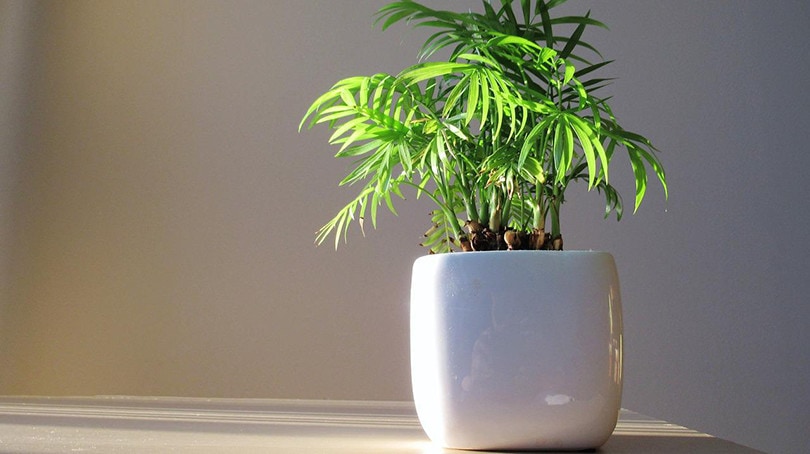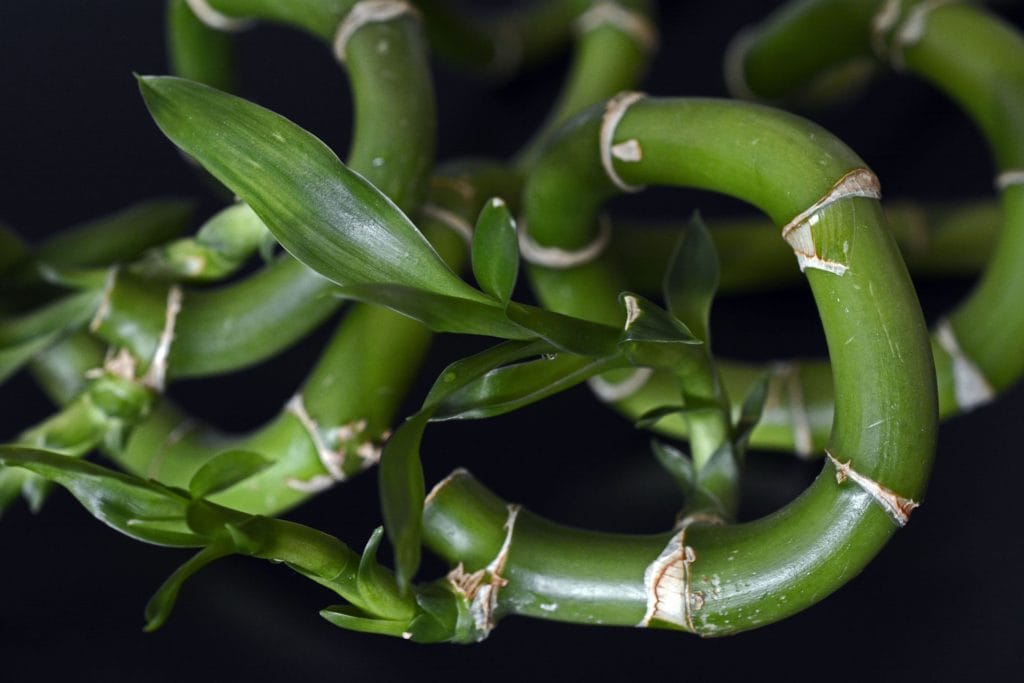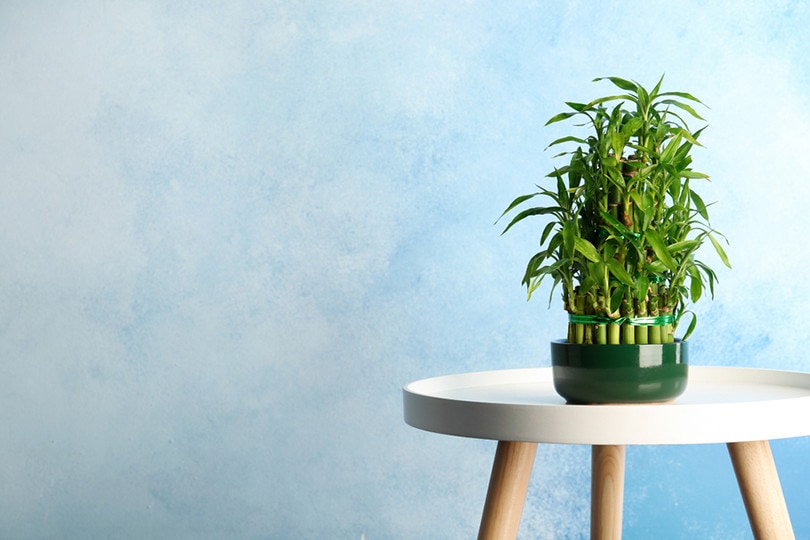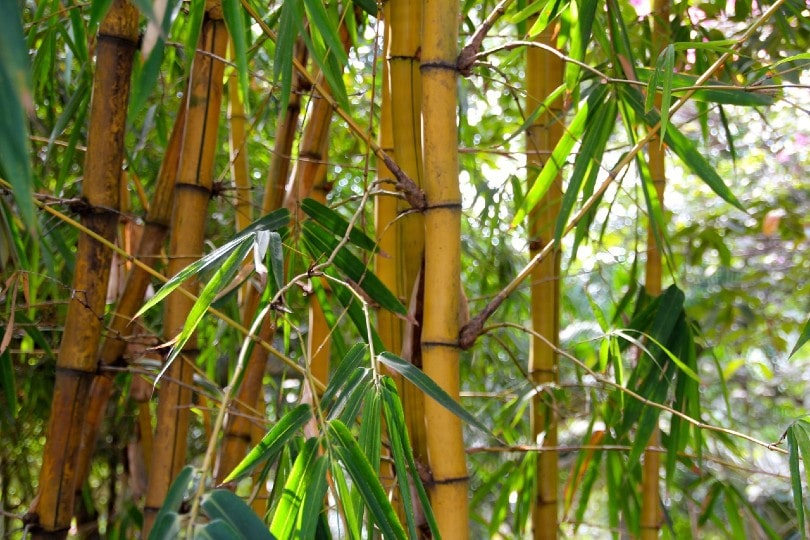How To Grow Bamboo Indoors: Tips, Tricks & Step-By-Step Guide
-
Pete Ortiz
- Last updated:

Bamboo is a popular ornamental plant that has been used as decoration for centuries. Bamboo can add a touch of green to any space and makes for a unique houseplant. Bamboo has been used in Feng Shui designs, and it has a slew of mystical properties that have been respected by cultures all over the world. For those reasons, bamboo has become a popular houseplant that people are interested in growing.
Bamboo is not the easiest plant to grow indoors, and maintaining a healthy indoor bamboo plant can take a lot of work and dedication. Here is how you can grow bamboo indoors, including everything you will need to succeed, a step-by-step planting process, and care instructions that cover a wide variety of bamboo questions.
A Note On Indoor Bamboo
Growing bamboo indoors takes a fair amount of care and maintenance. Bamboo is technically in the grass family. Grass is always better suited to grow outdoors than indoors. That means that while it is possible to grow bamboo inside, it will take more upkeep than most people realize.
Before trying to grow bamboo indoors, remember that these plants are much happier outdoors. Bamboo likes to spread its roots out in a wide shallow pattern that is not great for pots. Bamboo also likes a high level of humidity and can grow extremely quickly, even when indoors. These are all things that must be taken into consideration before trying to grow your own bamboo.

Preparation
Before you bring bamboo inside, remember that these are not low-maintenance plants. Despite thriving, outside bamboo can be tricky to master in an indoor environment. Prepare to get creative, be patient, and spend time watching, learning, and pruning your plant.
You will need the following items to successfully grow bamboo indoors:
- Broad-based pot
- Your choice of bamboo
- Well-draining soil
- Pruning shears
- Gravel
- Drainage tray
After you have gathered your materials, you can prepare to plant your bamboo and get it set up in a spot where it will be the happiest.
You can also buy bamboo that is already potted straight from a local garden center. Buying pre-potted bamboo can save time on planting.
Step-By-Step Instructions for Growing Bamboo Indoors
1. Choose The Right Pot
The best pot for bamboo is a shallow pot with a wide base. This gives the bamboo the best chance of having healthy roots and prevents the soil from holding too much water around the roots. Do not plant bamboo in a tall narrow pot or vase. The plant needs a wide shallow pot to thrive.
2. Create a Drainage Tray
One of the best things to do for your bamboo pot is to create a drainage tray that can double as a humidity tray. Get a tray that can fit under your pot and fill it with gravel. Make sure your pot has adequate drainage holes in the bottom. Keep in mind that some pots that come from the store do not have any pre-drilled holes for drainage, and it is something you have to do yourself.
The gravel drainage tray will make sure that the bamboo can drain properly and reduce the chance of leaving too much water around the roots. It is also a good idea to flood the drainage tray with water so that it is always wet. This will help to increase the ambient humidity around your bamboo, which is often critical to achieving a healthy bamboo plant. This small step can vastly increase your chances of keeping an indoor bamboo plant healthy.

3. Fill The Pot With Well-Draining Soil
Next, fill your pot with well-draining soil. Do not buy any potting soil. There are special potting soils that are designed for plants that need a lot of drainage. This soil is looser and clumpier than other soils and leaves plenty of room for your water to run through it. Look for mentions of drainage on the bag if you are buying your potting soil at the store.
Fill the pot until there are just a couple of inches left below the rim.
4. Plant Bamboo
Now it is time to plant your bamboo. Create a shallow indentation in the soil for your bamboo to sit. Bamboo does not need to be planted deeply in the soil. Insert the roots of the bamboo just a couple of inches into the soil. Next, water the bamboo so the soil is nice and wet so everything can meld together.
Keep an eye on your bamboo for the next couple of weeks and watch for signs of poor health. The first two weeks are the most critical time after a plant is potted. Also, never fertilize your bamboo if you have had it for less than six months.
5. Prune Regularly
Bamboo grows very quickly. In fact, bamboo is the fastest growing plant on Earth. Some species of bamboo can grow multiple inches in a single day when they are thriving. This can lead to your petite bamboo quickly growing out of control. The result is that you will need to plan on pruning your bamboo regularly. Choose a height that you want to keep your bamboo at and whenever it begins to grow taller than your ideal height, prune it.
Bamboo is a species of grass so pruning it won’t hurt the bamboo. Simply take a pair of pruning shears and snip off the stem at the desired location.
Some species of bamboo will also need to have their roots trimmed in order to keep them from overgrowing their pot. If you see your bamboo’s roots start to grow out of the soil, you will likely need to trim the roots. You must remove the bamboo from the pot and gently trim any long dangling roots. Not trimming the roots can lead to crowding and root rot which can negatively impact the health of the plant. Check the guidance for your individual bamboo species regarding the best times and methods of trimming the roots.

6. Repot If Necessary
Since bamboo grows voraciously when it is happy, it will likely become necessary to repot your bamboo at some point. If you are worried that your bamboo is getting too crowded in its current pot, you can repot it into a larger vessel. Choose a new pot. Remember to pick a pot with a broad base. Fill the new pot with well-draining soil, being sure to leave room for the existing plant. Next, gently remove the bamboo from its current pot. The bamboo’s roots should be nice and compact which makes transferring it easier than other plants. Place the bamboo into the new pot and fill in the areas around the roots with fresh soil. Water the plant in.
Water and Light Requirements
Bamboo likes full sun or partial shade. Since bamboo is a type of grass, it enjoys having as much sun as possible in order to thrive. The best place to put bamboo is near a warm window. Full sun is the best way to get a strong lively bamboo plant in the long run.
As for water, bamboo likes to have a moist, humid environment, but it does not like to stay wet. Most bamboo needs to be watered around once a week. Check your bamboo by putting your finger one inch into the soil and seeing if the soil is moist. If the soil feels dry, water the plant. If the soil feels moist, you do not have to water the bamboo.
A Note On Lucky Bamboo
Lucky bamboo is very popular and requires different care than traditional bamboo. Lucky bamboo can grow in just water or very rocky soil. Lucky bamboo also tolerates much greater amounts of shade than regular bamboo. That means overwatering is not as big of a concern for lucky bamboo as it is for regular bamboo. Do not treat regular bamboo like you would lucky bamboo, or it could result in poor results.
The Best Type of Indoor Bamboo
The best type of indoor bamboo is lucky bamboo. Lucky bamboo’s official name is Dracaena sanderiana, and it is marketed as a lucky plant. This species of bamboo does not originate in Asia but actually hails from central Africa instead. Lucky bamboo is the best kind of indoor bamboo plant because it can be kept to a very reasonable height, it is not as finicky as other species of bamboo, and it looks absolutely gorgeous when cared for properly. If you are looking at growing bamboo indoors, you should start with lucky bamboo, especially if it is your first foray into growing bamboo.
Some purists will argue that lucky bamboo is not a true bamboo plant. If you are not interested in growing lucky bamboo but want a more traditional bamboo plant, consider these species as well.
- Buddha’s Belly
- Shiroshima
- Dwarf Whitestripe
- Mexican Weeping Bamboo
Lucky bamboo does not need the sunlight that traditional bamboo needs which makes it a great indoor plant. These other varieties of bamboo are mostly species of dwarf bamboo, which are shorter and bushier than full bamboo. These species are accustomed to growing in the shade of trees or other bamboo which makes them great houseplants.
The Most Common Indoor Bamboo Problems
Bamboo suffers from two recurring problems when planted indoors. First, bamboo loves humidity. In many cases, owners overwater their bamboo by putting water straight into the soil without giving the bamboo the ambient humidity that it needs to thrive. Bamboo should not be heavily watered via the pot, but it does enjoy a high level of humidity in the air. If your bamboo plant is struggling there is a chance that it is getting too much water around its roots but not enough humidity in the air. A drainage tray can help with this by allowing water to sit under the bamboo without touching the roots.
Speaking of roots, the other issue with bamboo revolves around its root system. Many pots are designed to allow a plant to grow a confined root system that grows vertically. Bamboo does not like its roots to grow very deep in the wild and instead prefers to have its root system spread out around the plant. Many pots are too small for a bamboo’s root system to grow properly which can lead to root rot and general unhealthiness. Some experts even suggest pulling the bamboo out of its pot and trimming the roots to keep them from getting too crowded in the soil.
Benefits of Indoor Bamboo
Bamboo has a lot of properties that make it desirable. Many people cherish the simple look of a bamboo plant. Bamboo also features heavily in Feng Shui as a calming presence. Some cultures prize bamboo as lucky. When bamboo is cared for properly, it also makes a great ornamental plant. All of these reasons have elevated bamboo to a more mystical level than other indoor plants and have created a strong culture around bamboo that has gone back centuries.
Final Thoughts
With all of these steps and tips, growing indoor bamboo should be a breeze. As long as the bamboo plant is kept happy, it will thrive and grow very rapidly. However, finding the right balance of water, humidity, and potting space can be tricky, especially for first-time growers. However, if you stick with it, there are some great benefits. The results will be a unique houseplant with a rich history that can spice up any space.
Featured Image Credit:
Contents



